Hel Bound Bard exists in a setting that features heavy use of Old Gaelic fairy mythos, Norse mythology, and High Fantasy logic, so I felt having an index was probably a good idea. (The same setting as Iron Blood Bride, though no knowledge of IBB is needed to read!)
This index is here to help you only if you need it! So please continue to the 1st chapter! You can revisit this index for help with a term, need to remember a character we haven't seen in a while, or refresh yourself with the setting.
- There are NO spoilers in this index! -
(Please feel free to ask any questions!)
Character List:
Main Cast:
Clover – [Main MC] - An amnesic fairy bard with a bad habit of finding trouble.
Landreth “The Soulblade” – [Love Interest] - An Ex-Templar sellsword with a dark mysterious past.
Áine - A former druid, now a witch who runs a potion shop in the Crater. Has known Clover 5+ years.
"Nor" Enora Wolfbane - A “retired” feyer. Has been married to Áine for 3 years.
Fleabane – A strange creature Clover picked up, no one is sure what it is.
Seelie Royal Fey:
Morgan - The Seelie Queen
Áedán – The newly “born” Seelie Prince.
Unseelie Royal Fey:
Alberich - Unseelie King
Fáelán - Unseelie Prince
Muirenn - Unseelie Princess
Asgardians:
Odin – The All-father, ruler of the gods, and the master of ravens.
Frigg – Goddess of Love. Wife of Odin.
Freyja - Goddess of magic. A fey turned goddess. Younger twin sister of Freyr. Leader of the Valkyries. The one who gave humans Seidr magic.
Freyr – God of pleasure. A fey turned god. Older twin brother of Freyja.
Njörðr – God of the sea. A fey turned god. Father of Freyja and Freyr.
Loki – The Trickster God. Father of Hel, Jörmungandr, and Fenrir. Adopted son of Odin.
Thor - The God of thunder. Child of Odin, brother of Loki.
Tyr - The God of War. But rarely does Tyr raise his spear. Advocates for peace when possible, the god the Templars mainly worship.
Heimdallr – The God of the Bifrost. Keeps enteral watch for the coming of Ragnarök. For once Heimdallr blows his horn Gjallarhorn, Ragnarök truly begins. Is the one prophesied to kill Loki.
Other Mythological creatures of note:
Norns – Weavers of fate. Three sisters who dwell in the roots of Yggdrasil and weave the pre-destined future of the world.
Hel – Goddess of the dead. Child of Loki. Has many forms, but often appears as a spider-like woman with a black veil. No one truly knows why she wages war against the living with her Helborne, but one thing is certain, the war isn’t ending unless the goddess of death breaths her last.
Jörmungandr – Commonly referred to as the World Serpent. Child of Loki. A giant snake that circles around Midgard and keeps it separated from the other realms.
Fenrir – A giant black wolf. Child of Loki. Is supposed to be chained in the deepest parts of Helheim.
Yggdrasil - The World Tree. A giant ash tree that supports the universe. All of the realms are connected by its branches. It is the font of all life and the place where all life returns. Should Yggdrasil fall then all of the 9 realms will collapse as well.
Factions-
Templars: Warriors who dedicate their lives to fighting the never-ending war with the Helborne.
Devote followers of gods, they are practitioners of faith and steel, fighting to defend humanity in the name of their gods. Every templar follows the teachings of Tyr, though many of the templar orders choice to worship other gods alongside the war god.
Templars are instilled with minor divine gifts by their pacts made with Tyr (and other gods). and some powerful templars can even perform acts of minor miracles. Templars follow strict religious teachings that dedicate everything from their diet to their training schedules. Though templars are given basic training for battling fey threats, few templars ever actually intervene in fey altercations; their holy gifts poorly suited to fighting powerful creatures of nature. Unlike feyers however, templars are heralded as heroes and often receive warm welcomes when leaving their bastions. The highest rank of templars are known as Galahads.
Fairy Courts: The closest human parallel would be a country, as fairy courts have a monarch, nobles, and commoners, with their own unique governance and claimed land. There are two known Fairy Courts, the Seelie and the Unseelie.
The Seelie Court: Faires of Spring and Summer, with power over Fire and Wind. Are from Alfheim.
All Fey are prone to great emotions, but the Seelie Fey are particularly notable for how quickly their emotions change, ever fleeting and shifting. Seelie Fey while not common are more well known and seen among the human lands, they are more likely to engage in trade and make deals. A few notable Seelie Fey types would be: harpies, pixies, and unicorns.
The Unseelie Court: Fairies of Autumn and Winter, with power over Water and Earth. Are from Svartalfheim.
Unseelie Fey are more rigid than their Seelie cousins, emotions slower and longer lasting. It is commonly said, “To anger a Seelie Fey is to be met with a sudden roar of fire, but to anger an Unseelie fey is to be slow boiled in ice.” Humans tend to fear the Unseelie more than the Seelie, in part due to how rarely archfey from the Unseelie Court wander beyond their borders, leaving curious rumors and speculative guesswork to fill in the gaps of information. A few notable Unseelie fey would be: sirens, gargoyles, and treants.
Fey/Fairies/Fair Folk: All words used to describe Faires.
None of the terms for fey are offensive (at least the fey don’t view the terms as offensive no matter the human intent), though humans tend to use “Fair Folk” when trying to be polite. Most fairies refer to themselves exclusively with either “Seelie” or “Unseelie”, though when conversing with humans will use terms such as fey and fairy.
Helborne: Helborne are the living mutated dead, bodies who never found proper burial, or trapped souls that never entered the gates of Valhalla. Souls and bodies deformed by foul dark magics, Helbornes seek to corrupt and pollute the land of the living at the orders of their mistress, Hel, goddess of the dead.
Asgardians: Those from the divine plane of Asgard, the realm where the gods reside, a beautiful place of power and wonder. Asgardian is a term used when referring to the whole pantheon of divine gods (excluding Hel).
Witches: Little is known about the practitioners of magic, and they like to keep it that way. Witches despite what rumors say, are not born with magic, it takes skill, practice, and years of study to learn the arcane arts. Though just like power granted by the gods, there is a price for invoking magic that breaks the natural order.
Druids: Sworn enemies of feyers, druids are humans who willingly follow and swear oaths to the fey in exchange for power. The oaths the bind druids are generational, leading to druids being treated as a separate people even though most that still survive no longer continue their practices of fey worship. Druids are easy to spot because the fey magics that bless them also mark them as other, a druid’s eyes will be two colors, with the inner ring being the same shade of green as the Fluxx. Most of the druid enclaves are gone, but a few still remain hidden in the far corners of Midgard, worshiping the fey in place of the real gods.
Warlocks: witches that have made pacts with Hel. Imbued with forbidden knowledge warlocks can raise Helborne and help spread the undead plague upon Midgard.
Hel-Knights: A powerful type of Helborne that not even Templars can kill.
Hel-Knights serve the Goddess of dead Hel, and are the ones who lead her Undead army. These Helborne are incredibly strong and are capable of human speech and reasoning unlike most Helborne. Many myths surround the Hel-Knights and how they came to be. Theories range they are what happens to templars who aren’t buried properly to them being templars who have willingly forsaken their paths. No matter how the Hel-Knights came to be they are some of the strongest of Hel’s warriors and incredibly dangerous for their presence alone withers the land from the Asgard’s influence on Midgard, rendering normal templars unable to kill them.
Feyers: Feyers are mutated humans who have altered their bodies and souls to better fight the Fey, and to some, these fairy hunters are no longer human themselves.
All feyers belong to a feyer order, which are established groups of fairy hunters that train and house new and current feyers. Each order has its own rules and regulations and closely monitors only the land they are in charge of. Only in the most dire of circumstances do feyer orders work together. Despite having established orders, most fairy hunters operate like mercenaries, traveling out into the world trading coin for the heads of dead fey.
Terms:
(Templar) Oath – Every Templar makes an oath when they complete their Anointment becoming official members of their Templar chivalry. Oaths are incredibly private and sacred things, and most templars go their whole lives never revealing what their oaths are.
Anointment - The ceremony templars undertake when they become official members of the templar chivalry.
This ceremony is highly complex and takes serval days, a mimicry of the knighting ceremony that was once preformed by the first chivalry of templars. Here squires become full templars after taking their oaths. The Anointment only happens once a year at the Bastion (the largest templar stronghold), but templars aren’t allowed to undergo their Anointment until three members of templars from other chivalries recommend them to the 12 Bloodhands.
The 12 Bloodhands - the high council of the templars. In the ultimate act of devotion to Tyr, the 12 Bloodhands remove their own right hands to show their faith. Only Tyr can remove a Bloodhand before their death. Together with the Galahad, the leader of the templars, the 12 Bloodhands lead the templars.
Wild Hunt - A Wild Hunt is a gathering of noble Archfey led by a fey royal, assembled for a single purpose, to kill.
Joining – the final step in becoming a feyer. It is a closely guarded secret what happens during a Joining, but the process of becoming a feyer dulls one's emotions, mutates the eyes pitch black, and causes the blood to become a dark gray color. The blood of a feyer is poisonous to fairies, because of the high amount of iron added during the Joining process.
Ragnarök – The prophesied end of the world. It will begin with a winter that does not end, the Fimbulwinter. Gods will kill gods and all realms will fall from Yggdrasil. Creation itself will be unbound, not even the memory of life will remain.
The 3 Acts of Transference - A term used to refer to three symbolic feats, that if completed, will bind you to the fairy you perform them with. The acts are:
1- Partake of fey food
2- Accept a gift
3- Give thanks
True Names - A name that represents all that you are, and by giving your name to a fey, you give them power over you.
A True Name, can only be given by the owner of said name. Despite the human misconception that True Names are the ones you are born with, to Fey, True Names are the names you most identify with, for it is the connection and emotion behind the name that gives them power. As long as you believe it to be your name, it will have power.
That is why many children are born with middle names, secret names that they are told to never tell anyone but to remember. So even if they give their birth name to a disguised fey, the magic will not fully hold as they will not be giving “all” of their name.
Bláth-Croí - Literally translated into the mortal tongue as "Flower Heart". Each Fey has a plant that is intertwined with them. No two fairies can have the same plant, and these plants obey only the will of their matched fey. All Bláth-Croí's are plants that bloom or grow during the same season as the fairy they are paired with.
Wilder - A fey who has yet to undergo their metamorphosis and claim their Bláth-Croí.
Metamorphosis - The act of a wilder becoming a full fey. Each fey’s path to metamorphosis is personal, and often takes many seasons. Your body and mind fully aligning with your Bláth-Croí, until you become one of the World Tree’s many children. Your blood filled with the sap of her life and your skin hardened as her bark. You will gain your Bláth-Croí and take your true form.
The Fluxx - A realm between realms, it is where the true World Tree grows and where all magic comes from. Only the fey are allowed in this in-between realm.
Patron – The fey that sponsors a wilder’s transformation into a full fey. To sponsor a wilder is a taxing process and most archfey can only sponsor one wilder in their lives.
Archfey – Fey that are “above” other fey. They are the fey that are willingly made, who spend time as a wilder and become true “children of the World Tree”. They are not at the whims of their fey instincts, tend to take more humanoid guises, and retain their full identities from before their metamorphosis.
The 9 Realms:
Asgard: Realm of the Gods. Valhalla is in Asgard.
Jotunheim: Realm of the Giants.
Muspelheim: Realm of fire. Connected to Alfheim.
Niflheim: Realm of ice. Connected to Svartalfheim.
Alfheim: Realm of the Seelie Fey. Rotates around Midgard, when on top of Midgard, influences Midgard to have Spring and Summer.
Midgard: Realm of the Humans. Sandwiched between Alfheim and Svartalfheim. Connected to Asgard by the Bifrost.
Svartalfheim: Realm of the Unseelie Fey. Rotates around Midgard, when on top of Midgard, influences Midgard to have Autumn and Winter.
Nidavellir: Realm of the Dwarves.
Helheim: Realm of the dead and Helborne.

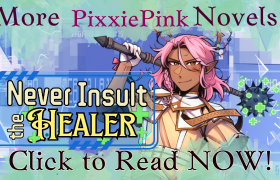
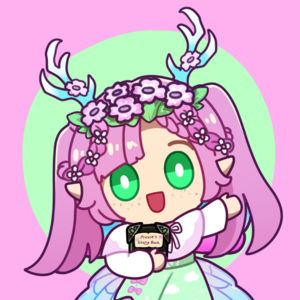


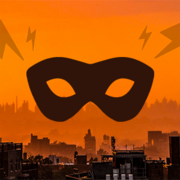
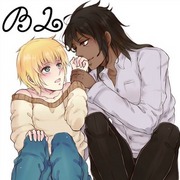
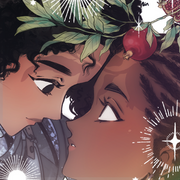
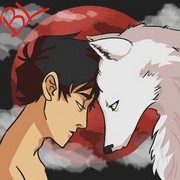
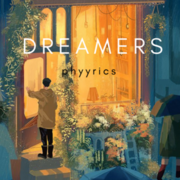
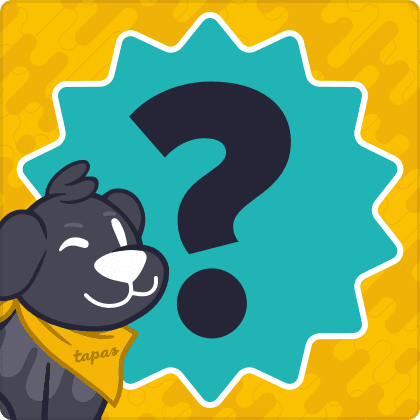
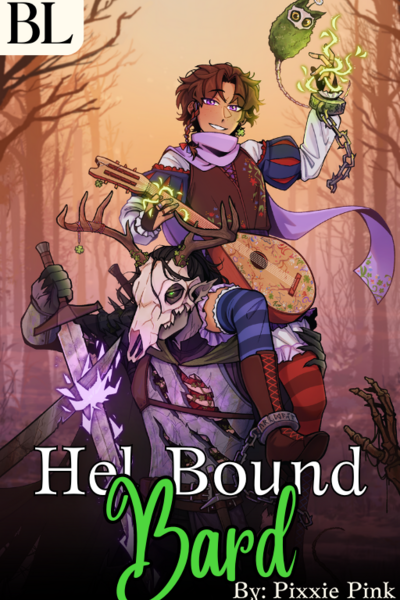
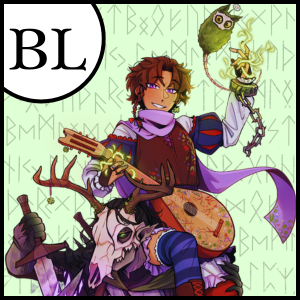
Comments (22)
See all